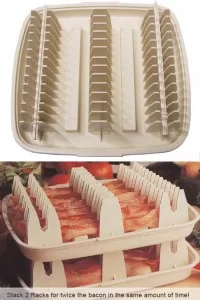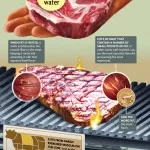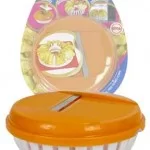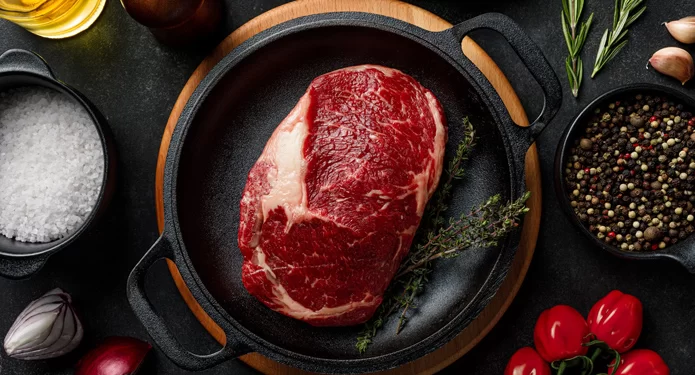
You don’t have to run out to a restaurant and plop down a bunch of money to enjoy a perfectly cooked steak. It is pretty easy to prepare one at home for less than half the cost, and without any compromise on quality or flavor. Most of you out there are probably saying to yourself, yeah, just grill it on the bbq, and that works great. But what if current weather conditions, or your own overall laziness won’t permit this type of cooking? Many people will turn to a standard frying pan, and then switch on the burner to get the job done.
If you’ve ever tried this method, then you know, the results are not always as good as what you would get off your grill, and in some cases may be downright inedible. For whatever reason, it seems that way more people ruin steaks on the stove top more than any other place. The same guy that can pull gourmet quality meat off the grill outside, may only be able to produce what more closely resembles boot leather when they attempt an indoor alternative. Instead of resigning to the fact that it’s too difficult to get it right, or just dealing with mediocre quality, you may want to try a slightly different method in order to make the process nearly fool proof.
Cooking Steak In A Cast Iron Pan
Cooking a steak on your stovetop can yield restaurant-quality results if done correctly. Here’s a comprehensive guide to ensure your steak turns out perfectly every time:
Choosing the Right Steak
- Cut of Steak: Select a high-quality cut such as ribeye, strip steak, tenderloin, or T-bone. These cuts are tender and have good marbling, which adds flavor.
- Thickness: Aim for steaks that are about 1 to 1.5 inches thick. Thicker steaks are easier to cook evenly without overcooking the exterior.
Preparing the Steak
- Bring to Room Temperature: Take the steak out of the refrigerator about 30 minutes before cooking. This ensures even cooking.
- Pat Dry: Use paper towels to pat the steak dry. Removing excess moisture helps achieve a good sear.
- Add Seasoning: Generously season both sides with coarse salt and freshly ground black pepper. You can also add garlic powder, onion powder, or a steak seasoning blend if desired.
Cooking Equipment
- Cast Iron Skillet: A cast iron skillet is ideal because it retains heat well and provides a great sear. If you don’t have one, use a heavy-bottomed stainless steel pan.
- Tongs: Use tongs to handle the steak. Avoid using a fork, as piercing the meat can release juices.
Cooking Steps
- Preheat the Skillet:
- Place the skillet on the stovetop over high heat.
- Let it heat up for about 5 minutes until it is very hot. You should see a slight smoke coming from the pan.
- Oil the Pan:
- Add a high smoke point oil like canola, vegetable, or grapeseed oil to the pan. About 1-2 tablespoons should be enough.
- Swirl the oil around to coat the surface.
- Sear the Steak:
- Place the steak in the skillet. It should sizzle immediately.
- Avoid moving the steak for the first 2-3 minutes. This helps develop a crust.
- Flip and Continue Cooking:
- After 2-3 minutes, use tongs to flip the steak. Cook for another 2-3 minutes on the other side.
- For a medium-rare steak, aim for an internal temperature of 130-135°F. Use a meat thermometer to check the temperature.
- If your steak is thicker, you might need to reduce the heat to medium and continue cooking, flipping every minute or so, until the desired internal temperature is reached.
- Add Aromatics (Optional):
- For extra flavor, add a couple of tablespoons of butter, along with crushed garlic cloves and fresh herbs like thyme or rosemary, to the pan during the last 1-2 minutes of cooking.
- Spoon the melted butter and aromatics over the steak continuously.
- Rest the Steak:
- Once the steak reaches the desired doneness, remove it from the skillet and place it on a cutting board.
- Let the steak rest for at least 5 minutes. This allows the juices to redistribute throughout the meat.
- Serve:
- Slice the steak against the grain for maximum tenderness.
- Serve with your favorite sides and enjoy.
Tips for Perfect Stovetop Steak
- Don’t Overcrowd the Pan: Cook one or two steaks at a time to ensure they sear properly.
- Ensure Proper Ventilation: Cooking steak on high heat can produce smoke. Ensure your kitchen is well-ventilated, using a range hood or opening windows if necessary.
- Use a Meat Thermometer: This is the most accurate way to ensure your steak reaches the desired doneness:
- Rare: 120-125°F
- Medium Rare: 130-135°F
- Medium: 140-145°F
- Medium Well: 150-155°F
- Well Done: 160°F and above
Cooking a steak on your stovetop can yield delicious, restaurant-quality results with the right preparation and technique. By selecting a good cut of meat, using the proper equipment, and following these steps, you can achieve a perfect sear and tender interior. Remember to let the steak rest before serving to ensure juiciness and flavor. Enjoy your perfectly cooked steak!
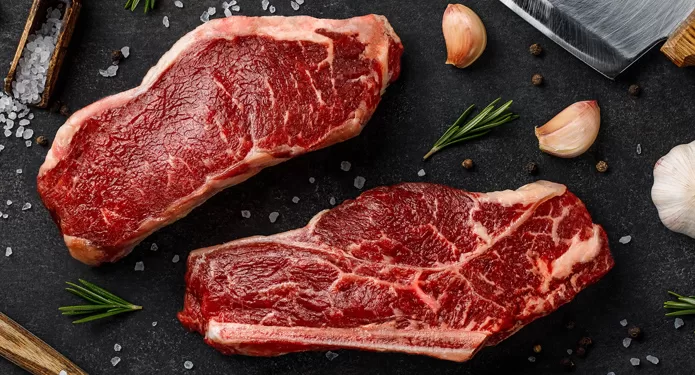
The Most Popular Cuts Of Steak
Steak is a versatile and beloved dish, with various cuts offering different textures, flavors, and cooking methods. Here’s an in-depth look at some of the most popular cuts of steak:
Ribeye
Characteristics:
- Marbling: Ribeye is known for its extensive marbling, which means it has fat distributed throughout the meat.
- Flavor: Rich and buttery due to the high-fat content.
- Texture: Very tender because of the fat and muscle composition.
Best Cooking Methods:
- Grilling: High heat sears the fat, enhancing the flavor.
- Pan-Seared: Using a cast iron skillet to develop a crust.
- Broiling: Quick cooking under high heat to keep it juicy.
New York Strip (Strip Steak)
Characteristics:
- Marbling: Less marbled than a ribeye but still has a good amount of fat along one edge.
- Flavor: Beefy and robust.
- Texture: Tender, but with a firmer bite than the ribeye.
Best Cooking Methods:
- Grilling: Direct high heat helps caramelize the surface.
- Pan-Seared: Achieves a good sear and develops a flavorful crust.
- Broiling: Suitable for even cooking and preserving juices.
Filet Mignon (Tenderloin)
Characteristics:
- Marbling: Lean with minimal fat.
- Flavor: Mild and subtle compared to other cuts.
- Texture: Extremely tender, almost buttery.
Best Cooking Methods:
- Pan-Seared: Finishes in the oven to avoid overcooking.
- Grilling: Quick sear to maintain its delicate texture.
- Broiling: Cooks evenly and quickly.
T-Bone and Porterhouse
Characteristics:
- Marbling: Contains both a strip steak and a portion of tenderloin, separated by a T-shaped bone.
- Flavor: Combines the robust flavor of the strip steak with the tenderness of the filet.
- Texture: Varied, with the strip side being firmer and the tenderloin side very tender.
Best Cooking Methods:
- Grilling: Ideal for the size and bone-in structure, which helps retain moisture.
- Broiling: Ensures even cooking of both sections.
Sirloin
Characteristics:
- Marbling: Leaner than ribeye and strip steak, with moderate fat content.
- Flavor: Beefy, but not as rich as ribeye or strip.
- Texture: Firm and slightly chewy.
Best Cooking Methods:
- Grilling: Benefits from high heat to sear the exterior.
- Pan-Seared: Good for achieving a flavorful crust.
- Stir-Frying: Suitable for cutting into strips for quick cooking.
Flank Steak
Characteristics:
- Marbling: Very lean with little fat.
- Flavor: Rich and beefy.
- Texture: Fibrous and somewhat chewy; needs proper slicing.
Best Cooking Methods:
- Grilling: Marinate and cook quickly over high heat.
- Broiling: Fast and effective, keeping it tender.
- Slicing: Always slice against the grain to minimize toughness.
Skirt Steak
Characteristics:
- Marbling: More marbled than flank, but still fairly lean.
- Flavor: Intense beefy flavor.
- Texture: Long, fibrous strands; very chewy if not sliced properly.
Best Cooking Methods:
- Grilling: Benefits from quick, high-heat cooking.
- Pan-Seared: Effective for achieving a good crust.
- Stir-Frying: Ideal for cutting into strips and cooking quickly.
Hanger Steak
Characteristics:
- Marbling: Moderate fat content.
- Flavor: Rich and beefy, often referred to as the “butcher’s steak” for its flavor.
- Texture: Tender with a slight chew.
Best Cooking Methods:
- Grilling: Quick, high heat is ideal.
- Pan-Seared: Ensures a good crust.
- Slicing: Slice against the grain for tenderness.
Rump Steak
Characteristics:
- Marbling: Lean with minimal fat.
- Flavor: Deep, beefy flavor.
- Texture: Firm, can be tough if overcooked.
Best Cooking Methods:
- Grilling: Best cooked to medium-rare to avoid toughness.
- Pan-Seared: Quick cooking to keep it tender.
- Stir-Frying: Suitable for slicing thinly and cooking quickly.
Understanding the characteristics of each steak cut allows you to choose the best one for your preferences and cooking methods. Ribeye and strip steaks are perfect for those who love rich, marbled meat, while filet mignon offers unparalleled tenderness. Cuts like flank and skirt steak are ideal for high-heat cooking and require proper slicing for the best texture. By selecting the right cut and employing the appropriate cooking technique, you can enjoy a delicious steak meal tailored to your taste.
Side Dishes You Can Also Cook Stove Top
Preparing side dishes on the stove can be both convenient and delicious, complementing your steak perfectly. Here are some popular steak side dishes that you can easily prepare on the stovetop:
Sautéed Vegetables
Sautéed Mushrooms:
- Ingredients: Button mushrooms, garlic, butter, olive oil, salt, pepper, fresh thyme.
- Method: Heat butter and olive oil in a skillet. Add sliced mushrooms and cook until they release their moisture and start to brown. Add minced garlic, salt, pepper, and thyme, and cook for another 2-3 minutes.
Sautéed Spinach:
- Ingredients: Fresh spinach, garlic, olive oil, salt, pepper, lemon juice.
- Method: Heat olive oil in a large skillet. Add minced garlic and cook until fragrant. Add the spinach and cook until wilted. Season with salt, pepper, and a squeeze of lemon juice.
Sautéed Asparagus:
- Ingredients: Asparagus, garlic, olive oil, salt, pepper, lemon zest.
- Method: Trim and blanch asparagus in boiling water for 2 minutes, then shock in ice water. Heat olive oil in a skillet, add minced garlic and asparagus, and sauté until tender. Season with salt, pepper, and lemon zest.
Potatoes
Garlic Mashed Potatoes:
- Ingredients: Potatoes, garlic, butter, milk or cream, salt, pepper.
- Method: Boil peeled and cubed potatoes until tender. Drain and return to the pot. Mash with butter, minced garlic, and warm milk or cream. Season with salt and pepper.
Smashed Potatoes:
- Ingredients: Small potatoes, olive oil, garlic, rosemary, salt, pepper.
- Method: Boil potatoes until tender. Drain and gently smash each potato. Heat olive oil in a skillet, add smashed potatoes, garlic, and rosemary. Cook until crispy and golden brown on both sides. Season with salt and pepper.
Grains
Mushroom Risotto:
- Ingredients: Arborio rice, chicken or vegetable broth, mushrooms, shallots, garlic, butter, Parmesan cheese, white wine, salt, pepper.
- Method: Sauté shallots and garlic in butter. Add sliced mushrooms and cook until tender. Add Arborio rice and toast for 1-2 minutes. Deglaze with white wine. Gradually add warm broth, stirring constantly, until rice is creamy and cooked. Stir in Parmesan cheese, salt, and pepper.
Garlic Butter Quinoa:
- Ingredients: Quinoa, chicken or vegetable broth, garlic, butter, parsley, salt, pepper.
- Method: Rinse quinoa under cold water. Cook in a pot with broth and a pinch of salt according to package instructions. In a skillet, melt butter and sauté minced garlic until fragrant. Add cooked quinoa and parsley, stirring to combine. Season with salt and pepper.
Salads
Caprese Salad:
- Ingredients: Tomatoes, fresh mozzarella, fresh basil, olive oil, balsamic vinegar, salt, pepper.
- Method: Slice tomatoes and mozzarella. Arrange on a plate with fresh basil leaves. Drizzle with olive oil and balsamic vinegar. Season with salt and pepper.
Warm Brussels Sprouts Salad:
- Ingredients: Brussels sprouts, bacon, apple cider vinegar, Dijon mustard, olive oil, salt, pepper.
- Method: Shred Brussels sprouts. Cook bacon in a skillet until crispy, then remove and set aside. In the same skillet, add shredded Brussels sprouts and cook until tender. Mix apple cider vinegar, Dijon mustard, and olive oil to make a dressing. Toss Brussels sprouts with dressing and crispy bacon. Season with salt and pepper.
Legumes
Sautéed Green Beans with Almonds:
- Ingredients: Green beans, slivered almonds, garlic, butter, salt, pepper.
- Method: Blanch green beans in boiling water for 2-3 minutes, then shock in ice water. Heat butter in a skillet, add garlic and slivered almonds, and cook until almonds are golden. Add green beans and sauté until tender. Season with salt and pepper.
Black Bean and Corn Salad:
- Ingredients: Black beans, corn, red onion, bell pepper, cilantro, lime juice, olive oil, salt, pepper.
- Method: In a large bowl, combine drained and rinsed black beans, corn, diced red onion, and bell pepper. Add chopped cilantro, lime juice, olive oil, salt, and pepper. Toss to combine.
These stovetop side dishes are not only easy to prepare but also pair wonderfully with steak, adding variety and flavor to your meal. From sautéed vegetables and creamy potatoes to flavorful grains and refreshing salads, these sides will enhance your steak dinner and make it a complete, satisfying meal.
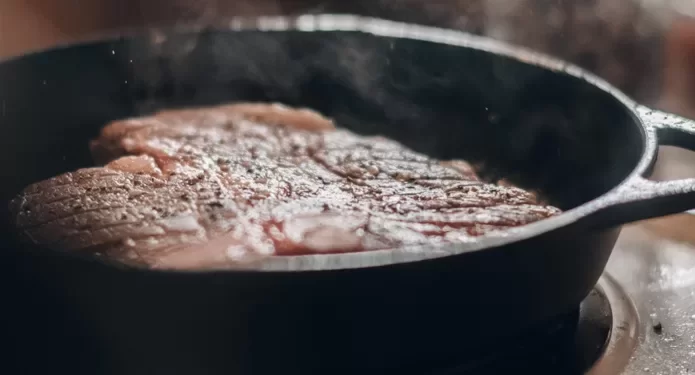
Gas or Electric Range: Whats Best For Cooking a Steak?
Choosing between a gas stove and an electric stove for cooking a steak depends on several factors, including heat control, cooking preferences, and the specific characteristics of each type of stove. Here’s a detailed comparison to help you decide which might be better for cooking a steak:
Gas Stove
Advantages:
Precise Heat Control:
- Instant Adjustments: Gas stoves allow for immediate temperature changes, which is crucial for searing a steak and then reducing the heat to finish cooking.
- Even Heating: The flame wraps around the pan, providing even heat distribution which is beneficial for cooking a steak evenly.
High Heat Output:
- Searing: Gas stoves can reach high temperatures quickly, which is ideal for getting a good sear on your steak, creating a flavorful crust.
Visual Cue:
- Flame Visibility: The visible flame helps you gauge the heat level more intuitively compared to an electric stove.
Disadvantages:
Heat Consistency:
- Drafts: Gas stoves can be affected by drafts or airflow in the kitchen, potentially leading to uneven heating.
Safety Concerns:
- Open Flame: There’s a higher risk of burns or fire hazards due to the open flame.
Electric Stove
Advantages:
Consistent Heat:
- Steady Temperature: Electric stoves provide consistent and even heating, which can be beneficial for maintaining a steady cooking temperature once the initial sear is done.
Smooth Surface:
- Easy Cleaning: The flat surface of electric stoves is easier to clean, and there’s no risk of food falling into burners.
Safety:
- No Open Flame: Reduced risk of fire hazards and accidental burns compared to gas stoves.
Disadvantages:
Slower Heat Adjustments:
- Delayed Response: Electric stoves take longer to heat up and cool down, making it harder to achieve the precise temperature control needed for searing and then lowering the heat.
High Heat Challenges:
- Reaching High Temperatures: Electric stoves may not reach the same high temperatures as quickly as gas stoves, which can affect the quality of the sear.
Best Practices for Each Type of Stove
Cooking Steak on a Gas Stove
- Preheat the Skillet:
- Use a heavy-bottomed skillet or cast iron pan.
- Preheat the pan on high heat for about 5 minutes to ensure it’s hot enough for a good sear.
- Oil the Pan:
- Use a high smoke point oil like canola or vegetable oil.
- Swirl the oil to coat the pan before adding the steak.
- Sear and Adjust:
- Place the steak in the hot pan and sear for 2-3 minutes on each side to develop a crust.
- Adjust the heat as needed to finish cooking the steak to the desired doneness.
- Rest the Steak:
- Let the steak rest for at least 5 minutes before slicing to allow the juices to redistribute.
Cooking Steak on an Electric Stove
- Preheat the Skillet:
- Use a heavy-bottomed skillet or cast iron pan.
- Preheat the pan on high heat for about 10 minutes, as electric stoves take longer to reach the desired temperature.
- Oil the Pan:
- Use a high smoke point oil like canola or vegetable oil.
- Swirl the oil to coat the pan before adding the steak.
- Sear and Adjust:
- Place the steak in the hot pan and sear for 2-3 minutes on each side to develop a crust.
- Lower the heat to medium or medium-low to finish cooking the steak to the desired doneness.
- Rest the Steak:
- Let the steak rest for at least 5 minutes before slicing to allow the juices to redistribute.
Conclusion
Gas Stove:
- Best for those who want precise control over cooking temperatures and prefer quick heat adjustments. Ideal for achieving a perfect sear with high heat.
Electric Stove:
- Suitable for those who prefer consistent and steady heat. It’s safer and easier to clean, but requires more patience with heat adjustments and preheating.
Ultimately, both gas and electric stoves can produce a perfectly cooked steak if used correctly. The choice depends on your cooking style and preferences. For maximum versatility and control, many chefs and cooking enthusiasts prefer gas stoves. However, with careful attention and technique, an electric stove can also yield excellent results.
The Downside: Pan Frying Vs. Grilling
One of the main problems people have when frying a steak in a pan is overcooking. It is a completely different surface than what a barbecue provides, so the same techniques will not offer the same results. Many of us will tend to a steak like we do anything else in a pan on the stove, and continue rotating and flipping until it looks “right”. At this point, most of us will now be left to eat a well done piece of meat that is devoid of all the lovely, natural flavoring. In order to avoid this under normal circumstances, you need to heat the pan to the perfect temperature and cook with exact times while making sure to not flip it more than once, or cut it open to check for doneness.
If you’re not working with the best cut, another downside can arise by pan frying it. When grilling, any fat that cooks off will drip down and away from your food. In the pan, it remains there, so it is not the healthiest choice when preparing steak that has any amount of fat content that is visible. Because many approved methods of stove top steak cooking recommend the addition of some sort of oil, you may not be able to avoid this factor, even with the most expensive pieces.
The final draw back for using a regular pan to cook your meat will be dryness. It’s very easy to dry out the meat when cooking in a pan on the stove, and if that happens, you will have a pretty unappealing dish to eat afterward because the natural juices are a big part of the flavor that everyone enjoys.
Downsides of Cooking a Steak on the Stove
1. Lack of Smoky Flavor:
- Flavor Profile: Grilling imparts a unique smoky flavor to the steak due to the charcoal or wood used in the grill. This adds a depth of flavor that is difficult to replicate on the stovetop.
- Char Marks: The grill also creates attractive char marks which add to both the flavor and visual appeal of the steak.
2. Limited High Heat:
- Heat Levels: While stovetops can get quite hot, they often don’t reach the same high temperatures as a grill. This can affect the sear and crust formation on the steak.
- Heat Consistency: Grills provide consistent, even heat over a larger surface area, which can be harder to achieve on a stovetop, particularly with electric stoves.
3. Ventilation Issues:
- Smoke and Odors: Cooking a steak on the stovetop can produce a lot of smoke and strong odors, especially if you’re aiming for a good sear. Proper ventilation is necessary to manage this, which might not be as big a concern when grilling outdoors.
4. Space and Surface Area:
- Cooking Space: Grills usually offer more cooking space, allowing you to cook multiple steaks or additional side dishes simultaneously. Stovetop cooking is often more limited by the size of the pan.
- Crowding: Overcrowding the pan can result in steaming rather than searing, which is less of an issue on a grill with ample space.
5. Cleanup:
- Oil Splatter: Cooking steak on the stove can result in oil splattering, which can be messy and harder to clean up compared to a grill.
- Pan Maintenance: Pans, especially cast iron, require maintenance and seasoning, whereas grills usually only need a brush down after use.
6. Outdoor Experience:
- Ambiance: Grilling is often associated with outdoor cooking, which can be a more enjoyable and social experience, especially in nice weather.
- Versatility: Grills allow you to experiment with different wood chips, marinades, and grilling techniques that enhance the overall experience and flavor of the steak.
Comparing the Two Methods
Stove Top Cooking:
Advantages:
- Convenient and can be done year-round, regardless of weather.
- Better control over the cooking environment, including temperature adjustments.
- Easier to manage small quantities and less prep work compared to setting up a grill.
Disadvantages:
- Lack of smoky, char-grilled flavor.
- Potential for smoke and odor buildup indoors.
- Limited cooking space and potential mess from oil splatters.
Grilling:
Advantages:
- Adds a smoky flavor and attractive grill marks.
- Offers larger cooking surface and better heat consistency.
- Provides a pleasant outdoor cooking experience, especially for gatherings.
Disadvantages:
- Dependent on weather conditions.
- Requires more setup time and effort (e.g., lighting charcoal, preheating).
- Generally needs more cleaning, especially for charcoal grills.
Tips to Improve Stovetop Steak Cooking
If you prefer or need to cook steak on the stove, here are some tips to improve your results and mitigate the downsides:
- Use a Cast Iron Skillet: A well-seasoned cast iron skillet retains heat well and helps develop a good crust on the steak.
- High Heat Searing: Preheat your pan properly to ensure it’s hot enough to sear the steak. This helps in achieving a crust similar to that from a grill.
- Ventilation: Use a range hood or open windows to manage smoke and odors.
- Finish in the Oven: For thicker cuts, consider searing the steak on the stovetop and then finishing it in a preheated oven to ensure even cooking.
- Flavor Enhancements: Use herbs, garlic, and butter basting to add flavor to the steak. While it won’t mimic the grill’s smoky taste, it adds a delicious dimension to the meat.
- Rest the Steak: Let the steak rest after cooking to allow juices to redistribute, ensuring a tender and juicy result.
While cooking a steak on the stove has its downsides compared to grilling, it can still yield delicious results with the right techniques. Understanding the limitations and employing methods to enhance flavor and texture will help you achieve a great stovetop steak, even if it lacks the smoky, char-grilled essence of a steak cooked on a grill.
A Fool-Proof Way To Cook A Steak On Your Stove
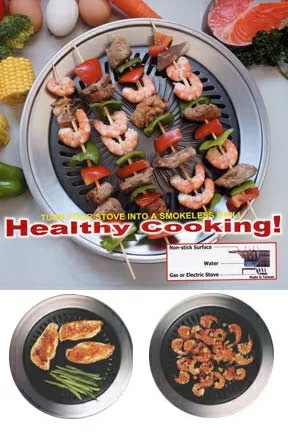
A Stove Top Grill [1] is a great alternative to regular pan frying, and will give your meat much better flavor due to the design and simplicity of use. Although it sits on your stove, and uses the burner as a heat source, it is much more difficult to ruin your steak when you cook on it. Instead of tough, flavorless slabs of beef, you will get something much closer to what is achieved by outdoor grilling. It will help to lock in flavor, and keep the meat moist, tender and flavorful. You will be able to use more than one technique and still achieve quality results, so it will be far more versatile and able to adapt to personal cooking styles. If you like to flip over and over you can do that, if you like to grill with a cover, you can do that, if you want to use a pan-style technique, that would be fine, if you want to pretend you are outside, that would be OK, and if you want to grill with some hybrid technique that combines several of these together, that would probably work out too.
Thanks to the clever design of this grill pan, your meat will cook more evenly, the fat will drip away as you cook, and a ring of moisture will infuse flavor and lock in moisture in order to assure restaurant quality results. Because it’s so easy to use, and prevents the drying of your food, it will be much more difficult to cook something you wouldn’t want to eat, and anyone should be able to end up with a nice looking steak, cooked to the desired level of done.
How To Use It:
Using the Stove Top Grill is pretty simple, so it’s highly regarded as a viable alternative to breaking out a large, outdoor grill. It can be used on any type of stove, so it does not matter if you have electric or gas, and you can even use it on smooth surface ranges as well. The amount of time it will need to heat up will vary depending on the type of stove you have, but any one will work. Gas burners heat it up the fastest, and glass top electric ranges will take the longest amount of time.
Once the pan is up to the desired temp, any stove should keep it hot to the same degree, so the only real variable for usage will be how long before you can start. An easy way to tell that the grill plate is hot enough to begin cooking is to flick a couple of drop of water onto it. If they just sit there, you need to wait a bit longer. If they dance around and then disappear, you should be good to go. Getting a hot surface is one of the most important steps to cooking a good steak, and if you don’t let the surface fully heat, you may have trouble getting the end result that you expect.
Prior to placing the grill on your stove, you’ll want to add some sort of liquid to the outer ring. For most basic usage, water is ideal. It will add the steam and moisture you want, but will not affect flavor. You can also add marinade, wine, beer and other flavorful liquids in order to add steam and taste all at the same time.
Moisture in the ring is essential for use, and not something you should overlook. Is serves an important function for the actual cooking, but it also makes cleaning afterward a bit easier too. As you cook, any fat or other particles that natural drip away from meat as it cooks, will fall conveniently into this ring for collection. When fat drips on metal, it sticks and can be difficult to clean, but when it drips into water, it can be disposed of easily.
It’s a bit hard to visualize in ones head without additional illustration, but when you use this grill, your meat will be over direct heat, yet all of the drippings will not fall onto the burner to cause a disaster. Instead they drip down naturally, and everything is collected within the grill pan itself.
Once you have a fully prepared grill pan [1], that has been allowed to heat up all the way, it’s time to add your meat. For steak, we would recommend a medium high heat setting, and you can cook as many as four average size pieces on a single pan. For best results, you will want to make sure your beef is at room temperature, and not fresh from the fridge, as colder meat will throw off cooking times, and could result in less than perfect results. So let it sit out on the counter for a bit prior to getting the grill ready, and you should be in good shape.
For optimal flavor, most people will want to season the meat before it’s cooked. A simple combination that allows the true flavor of the meat to remain evident is salt, pepper and garlic. You could also shake on some premixed spices, or slather on your favorite marinade. After it has been seasoned to you liking, place the steak on the grill.
As discussed previously, there are many methods that will result in delicious tasting steak, and you can experiment to discover what works best for you. The following method of cooking has been tested, and proven to work incredibly well, and slightly better than others as far as our taste buds go. Once the steak is on the pan, do not move it around. Place it deliberately, and let it sit for just over half the recommended cooking time for your desired level of doneness (see chart below).
If you have a large lid for a pot, it will make the perfect cover. We would recommend covering the grill pan while the meat cooks, but it is not at all required. When covered, the steam will remain trapped inside. This means that any flavor added to the ring will infuse more thoroughly, and your meat will remain moist even if cooked beyond medium rare. Because the steam is hot, it will also cause the food to cook more evenly as it heats all sides at once.
Once the time is to just beyond the halfway mark, remove the lid and then flip your food. Some people like to give it a quarter turn as they flip for nicer looking grill marks, and to compensate for uneven heat distribution if it exists. Once flipped, hands off again, and replace the lid for the remainder of the time. You can use tongs to do your flipping, or you could employ a tool that is a little more advanced like the pigtail food flipper [2]. After the time is up, remove the steak from the grill and enjoy.
By cooking at a medium high temp, the exterior of the meat will sear to lock in the natural juices, and the interior will remain moist and tender. Prior to cutting into your finished product, and enjoying you meal, it is commonly recommended to let it sit on the plate for about 10 minutes. This settling time will cause the steak to retain more juice, and also cut and chew more easily.
How To Tell If It’s Really Done
You may typically check your meat by cutting it open to take a look at the middle, but this is a pretty bad idea, and will never result in the perfect steak. When you slice it open, heat will get in there to dry it out, and much of the flavorful juice will pour out to mess up all of your hard work. If you are unsure if it is cooked enough, or do not trust the timing, there is an easier way to tell if it is heated to your liking. Simply push down on the top of the meat to tell, pretty accurately, if it is finished cooking or not. When it’s still squishy, it’s more rare, but if it’s on the stiffer side, it’s more well done. After a couple times using this technique, you will know how your ideal temperature feels, so you’ll never have to cut and look again.
Cooking Times For Steak
- Filet
rare: 5.5 min.
med-rare: 7.5 min.
medium: 9.5 min.
well done: 11+ min. - Rib Eye
rare: 7.5 min.
med-rare: 9.5 min.
medium: 11.5 min.
well done: 13+ min. - Sirloin
rare: 7.5 min.
med-rare: 9.5 min.
medium: 12.5 min.
well done: 14+ min. - Strip Steak
rare: 75.5 min.
med-rare: 7.5 min.
medium: 9.5 min.
well done: 11+ min. - T-Bone
rare: 8.5 min.
med-rare: 10.5 min.
medium: 13.5 min.
well done: 15+ min.
Stop wasting money on restaurant meals, or waiting for summer to come so you can grill outside. With this easy to use indoor grill [1], you can enjoy perfectly cooked steaks at any time of the year, and you can save money by cooking and serving them yourself. Thanks to the advanced design, and versatility that allows it to be used on any type of stove, this grill offers one of the best ways to cook a steak on the stove. It’s no more complex than taking out a frying pan, but it will make it way easier to get the results you want.
What’s even better is that it’s not just a steak cooker, so get it to enjoy a fresh cut direct from the butcher, but then keep it handy to discover the other wonderful dishes it will allow you to cook inside, on your stove. Make shish kabobs and serve over rice, grill hot dogs and hamburgers, or even prepare grilled salmon with ease. Thanks to the flavor ring and easy operation, any number of delicious meals can be easily prepared, and they’ll taste better than what comes out of a pan, and nearly identical to what you’re able to achieve with the grill in your backyard.
Why Not Just Use a Non-Stick Frying Pan?
If you want you can use a non-stick frying pan to cook a steak, although it has some differences compared to using a cast iron skillet. Here are the pros and cons of using a non-stick frying pan, along with tips on how to achieve the best results if you do have to use one:
Pros and Cons of Using a Non-Stick Frying Pan
Pros:
Ease of Use:
- Cleaning: Non-stick pans are easier to clean, as food particles don’t stick to the surface.
- Less Oil Needed: Requires less oil for cooking due to the non-stick coating, which can be healthier.
Temperature Control:
- Even Heating: Modern non-stick pans often have good heat distribution, making it easier to cook evenly.
Cons:
High Heat Limitations:
- Heat Sensitivity: Non-stick coatings can degrade at high temperatures, typically above 500°F (260°C), making it less ideal for achieving a high-temperature sear compared to cast iron.
Durability:
- Scratching: Non-stick surfaces can be easily scratched by metal utensils, affecting their longevity and performance.
Flavor Development:
- Maillard Reaction: Non-stick pans may not achieve the same level of browning and flavor development as cast iron, which is essential for a good sear on steak.
Tips for Cooking Steak in a Non-Stick Pan
1. Choose the Right Steak:
- Select a steak with good marbling, such as ribeye or strip steak, for better flavor and juiciness.
2. Preheat the Pan:
- Heat the non-stick pan over medium-high heat for several minutes. Avoid high heat to prevent damaging the non-stick coating.
- Add a small amount of oil with a high smoke point, like canola or vegetable oil, to help with browning.
3. Prepare the Steak:
- Pat the steak dry with paper towels to remove excess moisture, which helps achieve a good sear.
- Season generously with salt and pepper, or your preferred steak seasoning.
4. Sear the Steak:
- Place the steak in the preheated pan. It should sizzle immediately.
- Sear for 2-3 minutes on each side without moving the steak, allowing a crust to form.
5. Adjust the Heat:
- After searing, reduce the heat to medium or medium-low to finish cooking the steak to the desired doneness.
- For thicker steaks, you may need to flip the steak multiple times to cook evenly.
6. Use a Meat Thermometer:
- Check the internal temperature with a meat thermometer to ensure the steak is cooked to your preference:
- Rare: 120-125°F (49-52°C)
- Medium Rare: 130-135°F (54-57°C)
- Medium: 140-145°F (60-63°C)
- Medium Well: 150-155°F (65-68°C)
- Well Done: 160°F (71°C) and above
7. Rest the Steak:
- Remove the steak from the pan and let it rest for at least 5 minutes before slicing. This allows the juices to redistribute and results in a more tender steak.
Enhancing Flavor
To compensate for the potentially lesser sear in a non-stick pan, you can enhance the steak’s flavor with the following techniques:
Butter Basting:
- During the last minute of cooking, add a tablespoon of butter to the pan along with crushed garlic cloves and fresh herbs like thyme or rosemary.
- Spoon the melted butter over the steak continuously for extra flavor.
Finishing in the Oven:
- After searing, you can transfer the steak to a preheated oven (set to 375°F or 190°C) to finish cooking. This method helps achieve more even doneness, especially for thicker cuts.
While a cast iron skillet is often preferred for cooking steak due to its high heat capacity and ability to develop a good sear, a non-stick frying pan can also be used effectively with the right techniques. By preheating the pan properly, managing the heat carefully, and enhancing flavor with butter basting or herbs, you can achieve a delicious steak cooked in a non-stick pan.
Products Mentioned
Tip Contents
